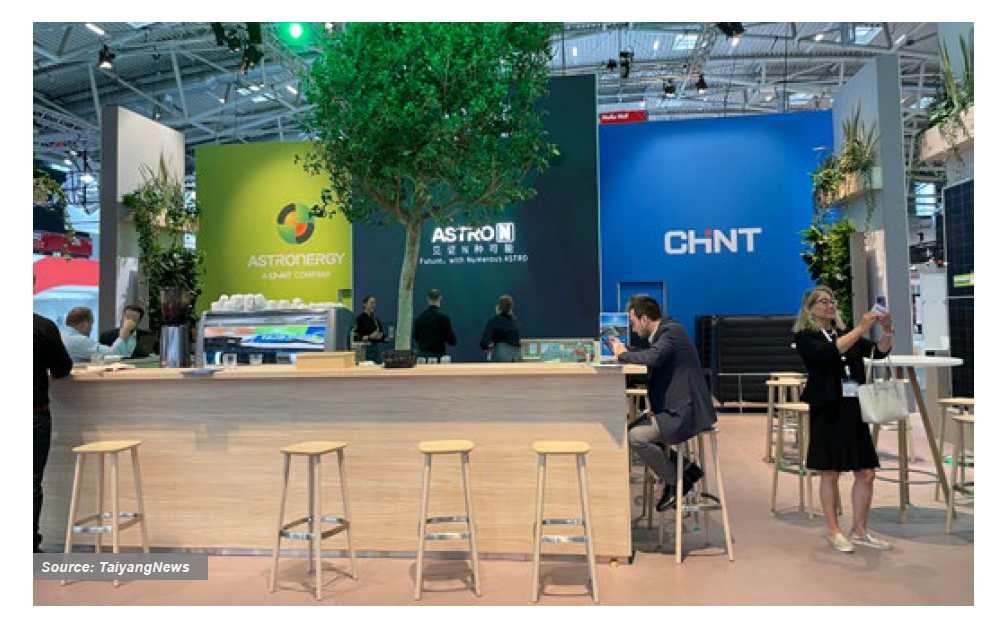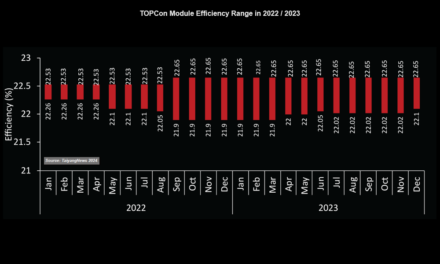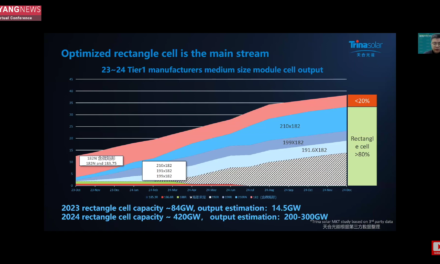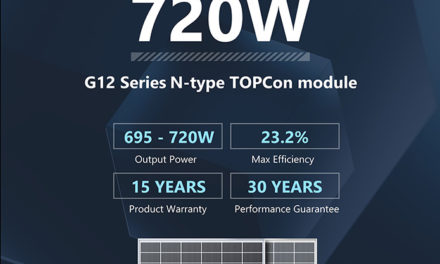- The Astro N5s is the TOPCon module series of Astronergy; at Intersolar it presented a 435 W product as the highest power rating panel of the series, the all-black variant comes with slightly lower power of 425 W
- The 575 W ASTRO N5 is promoted for C&I as well as for for utility scale projects
- TELOGY is a preassembled solar module on an industrial rooftile
Astronergy promoted its latest n-type TOPCon rooftop product line called ASTRO N at last year’s Intersolar show. The Chinese company, which belongs to the Chint Group, mainly promotes two products for residential rooftops under the ASTRO N5s series and a C&I module from the ASTRO N5 range.
The company presented the details of these products also at TaiyangNews Intersolar Munich Review Virtual Conferencee (see Astronergy presentation here). Baohua He, technical service manager emphasized the importance of the rooftop segment, which has been growing steadily and is expected to account for 40% of the market this year. One important characteristic of the rooftop application is a constrained roof area, which requires modules with high efficiency. In rooftop installations, the gap between the module and the roof is reduced compared to ground-mount, leading to poor air circulation that results in poor heat dissipation. In order not to lose too much power due to higher operating temperatures, the module should have a better temperature coefficient. Pleasing optical appearance is also a prerequisite especially for residential rooftop modules.
The ASTRO N product series, which is offered in two product streams, is designed to meet all these requirements, according to He. The Astro N5s, which is designed for residential rooftops, has the highest power rating of 430 W. The module is also offered in a full-black variant that has a slightly lower electrical performance of 420 W. The module’s length is less than 1.8 m and a little less than 1.2 m width, which represents dimensions that can be easily handled by installation personnel. This is also supported by its relatively light weight of 21.6 kg. However, the company is promoting the 570 W ASTRO N5 for C&I and also for utility scale projects.
Out of the 4 key features of the ASTRO N series highlighted by He, high power and high efficiency are on top. The modules reach up to 22% efficiency and a 10 W to 30 W higher power than the typical PERC product. Reliability comes next with a less than 1% first year degradation and an annual degradation of less than 0.4% for the rest of its 29-year span. The ASTRO N5 also supports high energy yield aided by its lower temperature coefficient of 0.3%/°C and a little higher bifaciality of 80%. Finally, it is the better aesthetics enabled by an optimized process flow and BOM. In his presentation, He also discussed the aspects that have enabled the module series to have these features.
As to the core of ASTRO N technology, it is based on high-quality n-type wafers of M10 size combined with TOPCon cell technology. The company also has plans to double its capacity from 3 GW this year to 6 GW next year and expand further to 20 GW in 2025.
At the module level, it is complemented with non-destructive cutting for slicing cells into two pieces that improve the module’s mechanical properties. He also presented the results of reliability tests — the degradation after 90 kWh of LID test is almost negligible, while 3 times PI Berlin’s testing conditions for LeTID resulted in a degradation of only 0.4%. The company has also exercised an indoor accelerated reliability test with 3x IEC conditions as in TC 600, PID 300 and DH3000 and the power loss of the module was less than 4%.
Regarding the benefits, He presented a comprehensive comparison to PERC. The ASTRO N series is estimated to produce 7 W more power at an operating temperature of 60 °C due to its low temperature coefficient. The better bifaciality of about 10% would help to improve the energy yield between 1% and 5% depending on the ground’s albedo. The outdoor performance comparison showed that the company’s TOPCon modules enable 3% to 4% higher energy yield. Finally, He emphasized that the energy gain with the ASTRO N series compared to PERC is about 27% to 28% and with a premium of 1.5 dollar-cents per W, ASTRO N increases the IRR by 0.4% to 1.1% absolute.
In addition to making products for mainstream applications, Astronergy is also building BIPV modules on its ASTRO N platform called TELOGY. The product is a preassembled solar module on an industrial rooftile. A double-glass module is attached on the top of a hot-dip galvanized Zn-Al- Mg composite base plate with detachable fasteners. According to Astronergy, the main advantage of the solution versus a traditional rooftop is that it is free from water leakage, apart from several other benefits such as better fire protection, thermal insulation and aesthetics. However, the product is currently offered only in China.
The text is an excerpt from TaiyangNews report on New Solar Products Overview 9M/2022, which can be downloaded for free here.
















